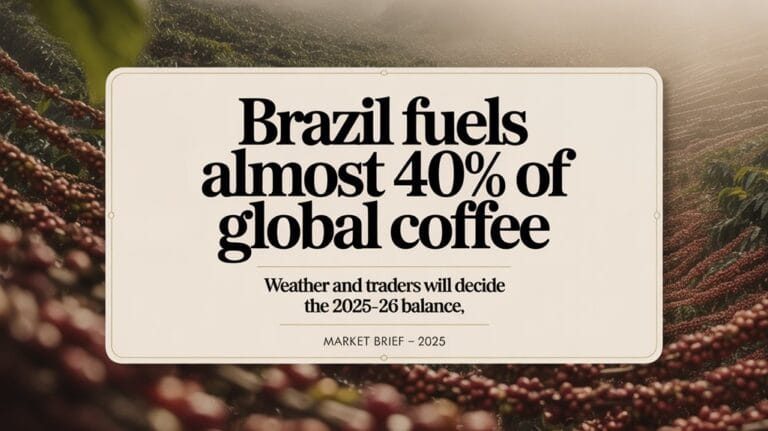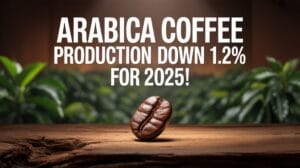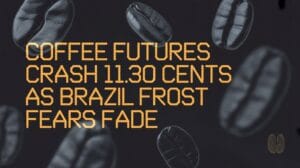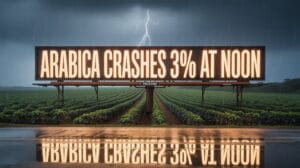Could 2025–26 eventually bring balance to the coffee market? The question comes as futures climbed and traders weighed changing supply and demand. Prices have jumped this year, and market watchers say weather volatility and speculative positioning are both shaping near‑term moves. Short‑term rains eased some worries, but forecasts still point to hot, dry stretches that could hurt next season.
Analysts at RallyStoneX and others note that coffee futures hit strong levels earlier in 2025. That rise reflects tight supplies after years of drawdowns. Some models show prices peaking in early 2025 and staying high into late 2025. Traders watching contracts see a mix of fundamentals and bets by speculators. Non‑commercial players still hold large net long positions. That keeps swings sharper when weather news arrives.
World production figures give a mixed picture. Brazil makes nearly 40% of world coffee. A better Brazilian crop would help ease pressure. Rabobank and others think Brazil might produce more in the 2025–26 season. Yet the season’s key flowering phase may face heat stress. Vietnam faced floods and typhoon damage that hurt harvests and access to farms. Ethiopia and other producers show varied outcomes. Overall output is forecast to rise slightly but remain below some earlier peaks.
Demand looks steady. Global coffee use has outpaced supply since 2021. Growth in China and other markets has added steady demand. That has kept inventories low and prices supported. Many users and roasters now pay closer attention to availability and cost. They’re watching whether production gains can match demand before inventories rebuild.
Market balance in 2025–26 may hinge on weather and how traders position themselves. If rains come at the right times, yields could recover and ease prices. If drought or heat hits flowering, shortages could persist. Meanwhile, large speculative bets can amplify moves up or down. For now, the outlook is cautious. Prices may ease if supply improves, but the market remains fragile and tied to weather and trader flows.
The delicate balance mirrors how Procopio di Coltelli shaped Paris’s coffeehouse culture, where varied offerings and dependable supply helped attract discerning patrons and stabilize expectations over time. economic dynamics





